PROPHET MUHAMMADMuhammad ibn Abdullah, the creator of the global Islamic religion, was an Arab leader in politics, society, and religion who lived from 570 to June 8, 632 CE. The monotheistic teachings of Adam, Abraham, Moses, Jesus and other prophets were confirmed by him, according to the Islamic faith, as a prophet who had received divine inspiration. Within Islam, he is revered as the Prophets' Seal. He was the child of Amina bint Wahb and Abdullah ibn Abd al-Muttalib. Abd al-Muttalib ibn Hashim, the head of the Quraysh tribe, had a son named Abdullah, who passed away a few months before Muhammad was born. Later in life, he would occasionally spend many nights alone in the mountain cave known as Hira. Muhammad lost his mother, Amina, at six, leaving him alone. Abd al-Muttalib, his paternal grandpa, and Abu Talib, his paternal uncle, were responsible for his upbringing. Muhammad began to openly teach these discoveries, declaring that "God is One," that total "submission" to God is the proper way of living, and that he was a prophet and a messenger of God, like the previous prophets in Islam. Initially scant in number, Meccan polytheists remained hostile toward Muhammad's believers for over thirteen years. He dispatched a few of his disciples to Abyssinia in 615 to flee continuous oppression, and later in 622, his believers moved from Mecca to Medina (then known as Yathrib). Muhammad assembled an army of 10,000 newly converted Muslims and advanced on Mecca. Muhammad took the city without much killing and with very little resistance. Just a few months later his return on the Last Spiritual journey in 632, he became unwell and passed away. The majority of the Arabian Peninsula had embraced Islam by the period of his funeral. Before Islam, ArabiaFarming was challenging in the Arab World due to the region's volcanic soil and general aridness. The terrain was littered with towns and cities, Mecca and Medina being two of the most notable. Mecca was a significant financial hub for many local tribes, but Medina was just a sizable, prosperous farming community. Native Arabs were either stable or migratory. While stationary tribes established and concentrated on commerce and farming, migratory communities were always on the move in search of water and pasture for their flocks. Early LifeChildhood of MuhammadAbdullah's father passed away six months before Muhammad was born. Following Islamic history, Muhammad was brought to live with a Bedouin family as early as he had been born since newborns were believed to be better in the desert; some western academics contest the veracity of this tale. Up to two, Muhammad lived only with a babysitter, Halimah bint Abi Dhuayb, with their spouse until he was two years old. Muhammad had become an orphan when, at age 6, his biological mother, Amina, passed away from sickness. Muhammad's caretakers made sure he did not die from starvation. However, it was difficult for them to do much more for him, especially since Hashim's family's hopes appeared to be decreasing at a certain time, as per Islamic historian William Montgomery Watt. During the sixth century, Mecca experienced guardians' indifference to looking after the tribes' weakest members. 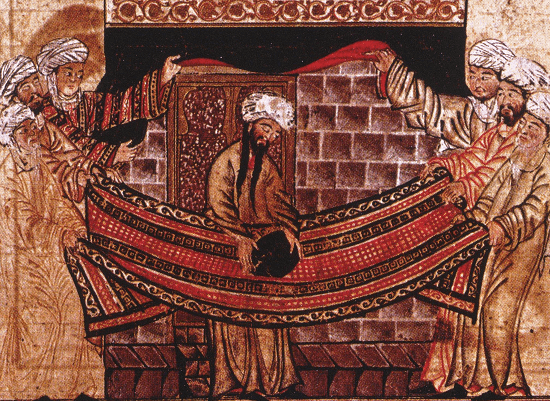
Muhammad travelled with his uncle on trading expeditions to Syria when he was a teenager to obtain expertise in international business. According to Islamic history, Muhammad encountered a Christian monk or hermit named Bahira while travelling with the Meccan caravan into Syria, and he was probably nine or twelve years old. Bahira is credited for foreseeing Muhammad's future as a prophet of God. In a narrative compiled by historian Ibn Ishaq, Muhammad is said to have participated in placing the Black Stone in the Kaaba wall in 605 CE, and it's a good legend. A sacred relic called the Black Stone was removed during Kaaba's repairs. It was always doubtful which clan would put the Black Stone back where it belonged. The Meccan lords couldn't decide either. Later, they decided to ask Muhammad, a 35-year-old male who had been the following individual, to enter the entrance to make those choices. This incident occurred 5 years earlier the Gabriel (an angel) gave him his inaugural glimpse. So, Muhammad requested a cloth and then placed the Black Stone in the middle of it. The community chiefs supported the edges of the cloth while they collectively carried the Black Stone to the desired location. Muhammad then set the stone, upholding everyone's honour. Beginning of QuranYearly, Muhammad began to pray alone in a cave called Hira on Peak Jabal nearby Mecca for many days. According to Islamic legend, the angel Gabriel came to Muhammad on a few of his journeys toward that cave in 610 and told him to read passages that would comprise the Quran. According to Shi'a history, Muhammad was hardly astonished or terrified when Gabriel appeared; rather, he greeted the angel as if he'd been anticipated. The original revelation was followed by a three-year gap throughout which he suffered from depression but also devoted himself even more to praying and acts of worship. Muhammad felt confident that he might differentiate such signals from his thinking. 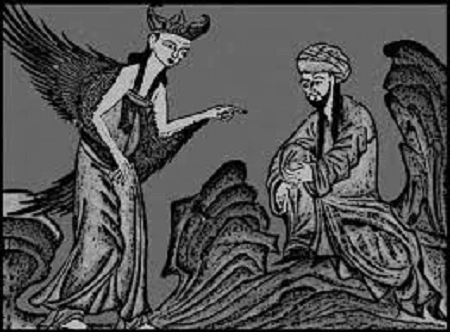
He was also concerned that someone else would disregard his statements as possessed. As per the Quran, the first of his primary responsibilities was to inform doubters of impending doom. Muhammad was commanded by the Quran to declare and promote the identity of his Master but was warned against worshipping idols or equating various religions with God. The primary topics of the early Quranic featured a person's obligation to their founder, the rising of the dead, God's final judgment, graphic details of cruelties in Hell and joys in Heaven, and God's signs throughout all elements of life. Objections and ConflictsThe first person to accept Muhammad as a prophet, under Muslim belief, was his spouse Khadija. She was trailed by Ali ibn Abi Talib, Muhammad's 10-year-old cousin, Zaid, Muhammad's adopted son, and personal friend Abu Bakr. Muhammad started preaching to the populace during the year 613. Early Muslims often fell into one of 3 types: the weak, the younger brothers and children of powerful people in business, and those who had unable to rise to the top of the community. Muhammad's popularity grew, challenging the area's leaders with tribal leaders whose wealth depended on the Ka'aba, the centre of Meccan religious life that Muhammad threatened to destroy. 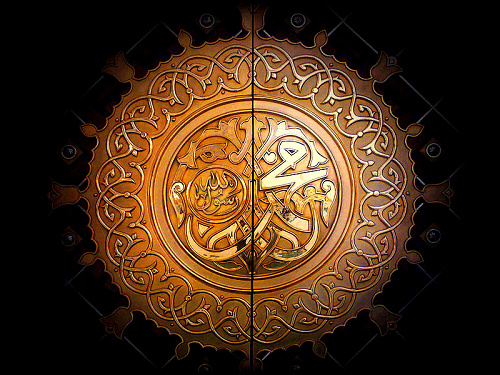
Muhammad had been given an engagement that would benefit him and access to the inner circle of merchants to persuade him to stop worshipping. Several stories concur that his suggestion that some of his supporters look for protection among the Christians in Abyssinia was influenced significantly by Meccan oppression. Aama ibn Abjar, the Christian Ethiopian monarch, provided refuge for a few of Muhammad's adherents when they fled to the Ethiopian Kingdom of Aksum in 615 and established a small population there. The following day, he recanted the lines at Gabriel's request, stating that now the demon itself had mumbled them. Rather, show a mockery of such deities. Later, the occurrence was accepted to several extents by various groups, although there were still many people who strongly disagreed with it far into the eleventh century. Hijra: A Year BeforeThe year 619 is referred to as the "Year of Sorrow" because he saw the deaths of his spouse, Khadijah, with his relative, Abu Talib. After Abu Talib's passing, Muhammad's staunch competitor Abu Lahab took control of the Banu Hashim tribe. As a result, Muhammad was put at risk; removing a dynasty's safety meant it wouldn't have been carried out. Muhammad was demanded to visit Mecca once more. He safely returned to his home place, thanks to a Meccan named Mut 'im ibn Adi. Several individuals went to Mecca for commerce either as Kaaba pilgrims. He used this chance to search for a new place for himself and the adherents. He tried negotiating unsuccessfully for a while, which had some progress with certain Yathribian guys. 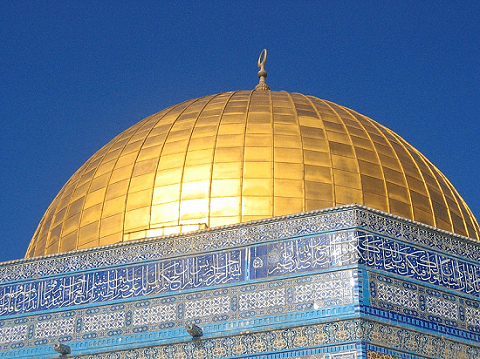
The Hijra is the name given to Muhammad with his companions in 622 journeys between Mecca and Medina. Arrival in MedinaComprising of members of Medina's 12 most significant tribes requested, Muhammad would act as the society's primary arbiter owing to his position as an impartial stranger. Believed that the conflict, which mostly concerned the city's Arab and Jewish residents, raged for almost 100 years before the year 620. This battle, which almost affected the state's Arab and Jewish populations, was thought to have lasted for about 100 years until 620. 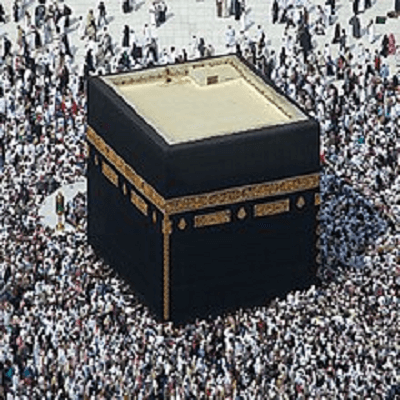
As soon as virtually every one of Muhammad's supporters left Mecca, he commanded them to travel to Medina. Ritual has it that the Members of this group planned to kill him because they were disturbed by leaving. Muhammad moved to Medina, a sizable farming oasis, around 622. The muhajirun are those who have moved from Mecca alongside him. Controversy with MeccaThe Meccans wanted to repair their prestige, which had been damaged at Badr, to continue their economic success. The Meccans sent ambush teams to Medina in the subsequent months, while Muhammad conducted operations against Mecca-aligned tribes and dispatched attackers onto a Meccan convoy. A 3000-man invasion force by Abu Sufyan left for such an assault on Medina. After that, a scout informed Muhammad of the existence and size of the Meccan force. The best way to defeat the Meccans became a point of contention during the Muslim council of battle the following day. Muhammad and several other prominent officials advised fighting inside Medina and benefiting from the fortified fortresses. While the Muslim troops won initial battles, a lack of self-control on the side of carefully placed archers resulted in a Muslim loss. About 75 Muslims were killed, including Hamza, Muhammad's uncle, who became the most well-known martyr in Muslim tradition. Rather than pursuing the Muslims, the Meccans went back to Mecca after winning. Muhammad was injured and feared to be killed, which is likely why it made the news. The strike had fallen short of its goal of obliterating Muslims. Following the deceased people's burial, the Muslims left for Medina later afternoon. Abu Sufyan focused his energy on launching yet another assault against Medina. He used bribes, booty pledges, reminders of Quraysh grandeur, misinformation about Muhammad's frailty, and promises of loot to win the allegiance of the nomadic peoples to the northern part of Medina. Muhammad took their property in the name of God because it was not acquired by violence. Muhammad unexpectedly outnumbered certain Arab tribes one by one, inspiring them to band together to overthrow him. While Muhammad could bolster his troops and dissuade several prospective tribes from joining his foes, he could not stop a coalition against him. Trench BattleTo defend Medina against a horse invasion, Muhammad gathered an army of around 3,000 men and used an unheard-of strategy in Arabia: the Muslims dug holes everywhere the city was vulnerable. Salman, the Persian, who converted to Islam, is credited with the invention of this technique. On March 31, 627, the battle of Medina started, and it continued for twelve days. This conflict is discussed in sura Al-Ahzab of the Quran. The Jewish community of Banu Qurayza, which lived in the south of Medina, negotiated with Meccan soldiers to rebel over Muhammad during the conflict. The Muslims surrounded the Banu Qurayza in their forts for 25 days just after the army withdrew, accusing them of betrayal. After ongoing negotiations due to Muhammad's scouts' disruption attempt, they finally achieved a deal. 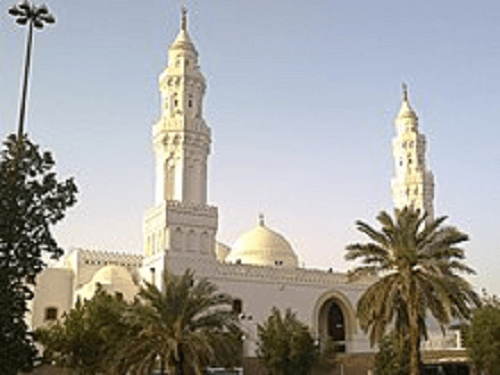
For his contemporary Malik ibn Anas then by the subsequent Ibn Hajar, Ibn Ishaq would be seen as an unreliable writer who sent "strange stories." According to Arafat, Jewish causes who spoke more than 100 years later confused the above record with flashbacks of previous murders in Jewish history. While returning from one of his journeys, an accusation of adultery was made against Aisha, Muhammad's third wife. After Muhammad revealed how he had obtained a vision verifying Aisha's purity and ordered that four observers verify the allegation of adultery, Aisha was cleared of all charges. Tomb of Muhammad
Muhammad became unwell a few months after the funeral visit and was weak and heated for several weeks. At the age of sixty - two or sixty - three, he passed away at his wife Aisha's home in Medina on June 8, 632. Muhammad's grave had all of its gold and diamond decorations removed. Wahhabism adherents, also known as Saud's supporters, reportedly escaped destroying nearly every grave dome in Medina to stop people from honouring Muhammad. Several visitors still perform a ziyara, a traditional trip toward the grave, despite the Saudis disapproving of the custom. After Muhammad Death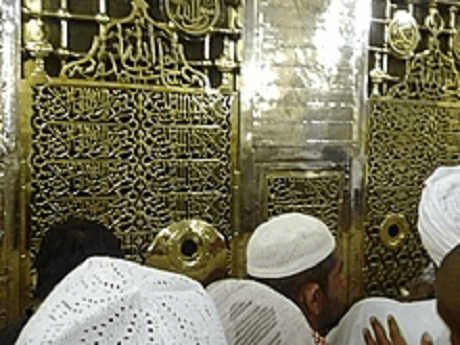
In the final days of his life, Muhammad brought together several Arabian tribes into a single Arab Muslim religious government. A dispute developed over Muhammad's succession after his passing. Several of Muhammad's friends disagreed with such a selection, insisting that Ali ibn Abi Talib was Muhammad's choice. The Byzantine and Sassanian kingdoms dominated the Pre-Islamic Middle East. Later, the area was ravaged by the Romans and Persian Conflicts, which made the kingdoms, dislike the native tribes.
Next TopicRAHUL DRAVID
|
 For Videos Join Our Youtube Channel: Join Now
For Videos Join Our Youtube Channel: Join Now
Feedback
- Send your Feedback to [email protected]
Help Others, Please Share










